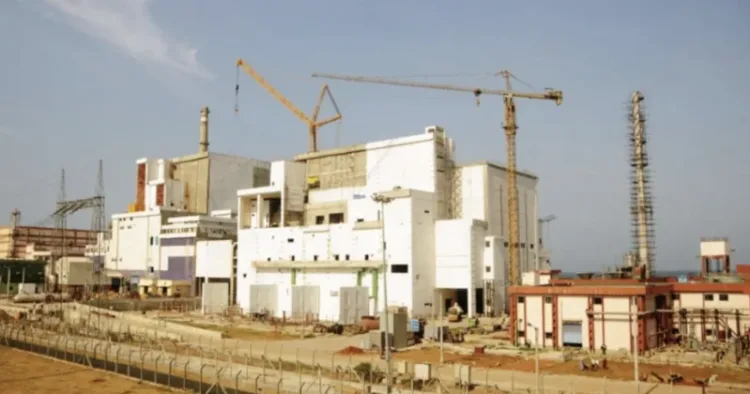In a significant stride for India’s atomic energy program, the Prototype Fast Breeder Reactor (PFBR) at Kalpakkam, Tamil Nadu, has been approved by the Atomic Energy Regulatory Board (AERB) to commence nuclear fuel loading and initiate a controlled chain reaction. This development, marks a pivotal moment for India’s self-reliant atomic energy initiative.
Dinesh Kumar Shukla, Chairman of AERB, confirmed the approval, describing the PFBR as an “inherently safe reactor.” The PFBR is a crucial component of India’s strategy to harness plutonium and explore the potential of thorium as a sustainable energy source. Given India’s limited uranium reserves, the country generates plutonium in atomic plants, while possessing vast thorium reserves, which could ensure energy independence for over three centuries.
The PFBR, a 500 MWe sodium-cooled reactor commissioned by Bharatiya Nabhikiya Vidyut Nigam Limited (BHAVINI), is designed to produce more fuel than it consumes. This characteristic, known as “breeding,” makes it an endless energy source. The term “fast” refers to the high-energy neutrons used in the reactor. India already operates a Fast Breeder Test Reactor (FBTR) at Kalpakkam, which has been functional for 39 years.
The AERB has executed a thorough multi-tier safety review, including phased core loading activities, periodic inspections, and oversight by a resident site observer team. Following extensive evaluation of safety submissions and a site visit, the Board granted permission for the “First Approach to Criticality,” which involves loading fuel into the reactor core and initiating “Low Power Physics Experiments.”
The PFBR, which has been in development for 20 years, has cost Rs 6,840 crore, with cost overruns from the initially approved Rs 5,677 crore. It is a testament to India’s Aatmanirbhar Bharat initiative, having been fully designed and constructed indigenously by BHAVINI with contributions from over 200 Indian industries, including MSMEs. Once operational, India will be the second country after Russia to have a commercially operating Fast Breeder Reactor.
The reactor will initially use Uranium-Plutonium Mixed Oxide (MOX) fuel. The Uranium-238 “blanket” surrounding the fuel core will undergo nuclear transmutation to produce more fuel. In the future, thorium-232, through transmutation, will create fissile uranium-233 for use in the third stage of India’s nuclear program. This advancement paves the way for the full utilization of India’s abundant thorium reserves.
Prime Minister Narendra Modi inspected the PFBR on March 4, 2024, witnessing the core loading process. The Department of Atomic Energy (DAE) highlights the PFBR’s advanced third-generation reactor technology, which includes inherent passive safety features ensuring a prompt and safe shutdown in emergencies. By using spent fuel from the first stage, the PFBR also significantly reduces nuclear waste, mitigating the need for large geological disposal facilities.
Despite the advanced technology, both the capital and per-unit electricity costs of the PFBR are comparable to other nuclear and conventional power plants. The growth of India’s nuclear power program is essential for meeting the goals of energy security and sustainable development. As a responsible nuclear power with advanced technology, India remains committed to expanding the peaceful applications of nuclear technology while ensuring the security of nuclear and radiological materials.
Once operational confidence is established, the DAE plans to construct two more Fast Breeder Reactors at Kalpakkam, further bolstering India’s nuclear power capabilities and energy independence.



















Comments